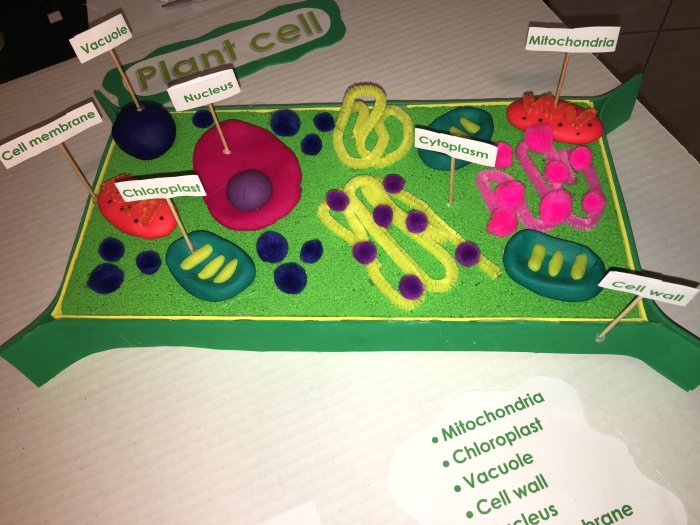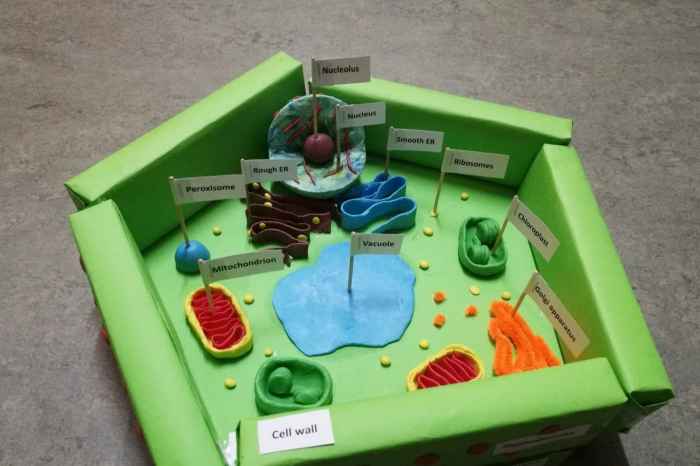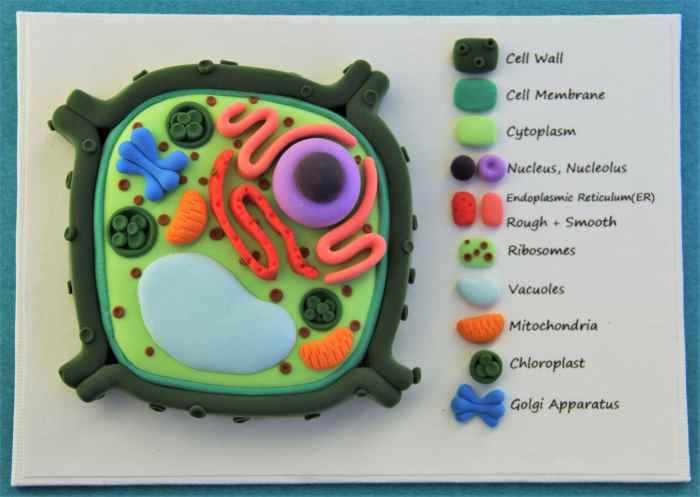The Cell Model 3D Project sets the stage for a groundbreaking revolution in biological research. This project delves into the exciting world of 3D cell models, showcasing how these intricate miniature replicas of living tissues are transforming our understanding of biology and paving the way for innovative medical breakthroughs.
Imagine a world where scientists can recreate the complex environment of human organs in a petri dish, allowing them to study diseases, test drugs, and develop personalized therapies with unprecedented precision. This is the promise of 3D cell models, and the Cell Model 3D Project is at the forefront of this exciting frontier.
Introduction to 3D Cell Models: Cell Model 3d Project
3D cell models have revolutionized biological research by providing a more realistic and physiologically relevant environment for studying cells and tissues. Unlike traditional 2D cell cultures, which are grown on flat surfaces, 3D cell models mimic the complex 3D architecture and microenvironment of living tissues, allowing for a more accurate understanding of cell behavior and function.
Advantages of 3D Cell Models
3D cell models offer several advantages over traditional 2D cell cultures, making them a valuable tool for a wide range of biological research applications.
- Improved Cell-Cell Interactions:In 3D models, cells can interact with each other in a more natural way, forming complex structures and networks that resemble those found in living tissues.
- Enhanced Cell Signaling:The 3D environment allows for more complex and realistic cell signaling pathways, providing a better understanding of how cells communicate and respond to their surroundings.
- Improved Drug Discovery and Development:3D cell models can provide more accurate predictions of drug efficacy and toxicity, reducing the need for expensive and time-consuming animal testing.
- Enhanced Disease Modeling:3D models can be used to study the development and progression of diseases, providing insights into disease mechanisms and potential therapeutic targets.
Types of 3D Cell Models
There are several different types of 3D cell models, each with its own unique advantages and limitations.
- Spheroids:Spheroids are 3D cell aggregates that are formed by allowing cells to self-assemble into spherical structures. They are relatively simple to create and can be used to study a wide range of cellular processes.
- Organoids:Organoids are more complex 3D cell models that mimic the structure and function of specific organs. They are created by using specialized cell types and growth factors to induce the formation of organ-like structures.
- Microfluidic Devices:Microfluidic devices are small, chip-based devices that create microenvironments that mimic the physiological conditions of specific tissues. They can be used to study cell behavior in a controlled and reproducible manner.
Design and Development of 3D Cell Models
The design and development of 3D cell models involve several key considerations, including cell type, scaffold material, and culture conditions.
Cell Type Selection
The choice of cell type is crucial for creating a relevant and accurate 3D model. The cells should be representative of the tissue or organ being studied and should be able to form the desired 3D structure.
Scaffold Material Selection
Scaffold materials provide structural support for 3D cell models and can influence cell behavior. Ideal scaffold materials are biocompatible, biodegradable, and have appropriate mechanical properties to mimic the native tissue environment. Common scaffold materials include:
- Natural Polymers:Collagen, gelatin, alginate, and fibrin are naturally occurring polymers that provide a biocompatible and biodegradable scaffold for cells.
- Synthetic Polymers:Poly(lactic-co-glycolic acid) (PLGA) and poly(ethylene glycol) (PEG) are synthetic polymers that offer tunable properties for specific applications.
- Hydrogels:Hydrogels are water-based polymers that can be crosslinked to form 3D networks that mimic the extracellular matrix (ECM) of tissues.
Culture Conditions
Optimizing culture conditions is essential for the successful development of 3D cell models. Factors that need to be considered include:
- Nutrient Supply:3D cell models require a consistent supply of nutrients and oxygen, which can be challenging due to diffusion limitations within the 3D structure.
- Waste Removal:Efficient waste removal is crucial for maintaining cell viability and function in 3D models.
- Mechanical Stimulation:Some tissues experience mechanical forces, such as stretching or compression. Incorporating these stimuli into 3D models can improve their accuracy and relevance.
Techniques for Creating 3D Cell Models
Several techniques are used to create 3D cell models, each with its own advantages and disadvantages.
- Bioprinting:Bioprinting involves depositing cells and biomaterials in a layer-by-layer fashion to create 3D structures. This technique allows for precise control over the placement of cells and biomaterials, enabling the creation of complex and customized 3D models.
- Microfluidics:Microfluidic devices create microenvironments that mimic the physiological conditions of specific tissues. They allow for the controlled delivery of nutrients and growth factors, as well as the collection of cellular products.
- Self-Assembly:Some 3D cell models can be created through self-assembly, where cells are allowed to interact and form 3D structures without the need for external scaffolding.
Applications of 3D Cell Models
3D cell models have a wide range of applications in various fields, including drug discovery, toxicity testing, and disease modeling.
Drug Discovery and Development

3D cell models are increasingly being used in drug discovery and development to improve the accuracy and efficiency of drug screening and toxicity testing. They provide a more physiologically relevant environment for studying drug efficacy and toxicity compared to traditional 2D cell cultures, leading to more reliable predictions of drug performance in humans.
Toxicity Testing, Cell model 3d project
3D cell models are used to assess the potential toxicity of drugs and other chemicals. They provide a more realistic representation of human tissues, allowing for a better understanding of how chemicals might interact with cells and tissues in the body.
This can help to identify potential safety risks and reduce the need for animal testing.
Disease Modeling
3D cell models are valuable tools for studying the development and progression of diseases. They can be used to model specific diseases, such as cancer, infectious diseases, and neurodegenerative disorders, providing insights into disease mechanisms and potential therapeutic targets. For example, 3D tumor models can be used to study the growth and spread of cancer cells, while 3D models of the brain can be used to study the effects of neurodegenerative diseases.
- Cancer:3D cell models of tumors can be used to study the growth and spread of cancer cells, the effects of chemotherapy and radiation therapy, and the development of resistance to treatment.
- Infectious Diseases:3D cell models can be used to study the infection process of viruses and bacteria, the development of antiviral and antibacterial therapies, and the immune response to infection.
- Regenerative Medicine:3D cell models can be used to study the potential of stem cells for tissue regeneration, the development of new biomaterials for tissue engineering, and the creation of personalized tissue grafts.
Personalized Medicine
3D cell models have the potential to revolutionize personalized medicine by enabling the development of patient-specific therapies. By using cells derived from individual patients, 3D models can be created that accurately represent the unique characteristics of a patient’s disease. This allows for the testing of different therapies on a patient’s own cells, leading to more targeted and effective treatment strategies.
Challenges and Future Directions
While 3D cell models offer significant advantages over traditional 2D cell cultures, there are still challenges associated with their use and development.
Challenges
- Scalability:Scaling up the production of 3D cell models can be challenging, especially for more complex models. This can limit their use in large-scale drug screening and toxicity testing.
- Standardization:There is a lack of standardization in the design and development of 3D cell models, making it difficult to compare results across different studies.
- Cost:The development and maintenance of 3D cell models can be expensive, limiting their accessibility to some researchers.
Future Directions

Despite the challenges, 3D cell models hold immense potential for the future of biomedical research. Continued research and development are expected to lead to advancements in:
- Integration of Advanced Imaging Techniques:The development of advanced imaging techniques, such as live-cell microscopy and high-throughput screening, will allow for the detailed analysis of cell behavior and function in 3D models.
- Development of More Complex Models:Researchers are working to develop more complex 3D models that better mimic the complexity of living tissues and organs. This includes incorporating multiple cell types, microvasculature, and other physiological features.
- Use of Artificial Intelligence:Artificial intelligence (AI) is being used to analyze large datasets generated from 3D cell models, leading to new insights into disease mechanisms and potential therapeutic targets.
Impact on Biomedical Research

3D cell models are poised to revolutionize biomedical research by providing more realistic and physiologically relevant systems for studying cells, tissues, and organs. This will lead to a better understanding of human biology, improved drug discovery and development, and the development of personalized medicine approaches.
The future of 3D cell models is bright, with the potential to transform the way we approach biomedical research and improve human health.
Last Recap
The Cell Model 3D Project has opened up a new era in biological research, empowering scientists with powerful tools to unravel the mysteries of life and develop innovative solutions for some of humanity’s greatest health challenges. As the technology continues to evolve, we can expect to see even more remarkable applications of 3D cell models in the years to come, ushering in a future where personalized medicine and regenerative therapies become a reality.
Answers to Common Questions
What are the main benefits of using 3D cell models compared to traditional 2D cell cultures?
3D cell models provide a more realistic representation of the complex cellular environment found in living tissues, offering a significant advantage over traditional 2D cell cultures. This increased realism allows for more accurate and reliable research results, particularly in drug discovery and disease modeling.
What are some examples of specific diseases that can be studied using 3D cell models?
3D cell models are being used to study a wide range of diseases, including cancer, Alzheimer’s disease, Parkinson’s disease, diabetes, and infectious diseases. The ability to create models of specific tissues and organs allows researchers to investigate disease mechanisms, test potential therapies, and develop personalized treatment strategies.
What are the future challenges and opportunities in the field of 3D cell model development?
While 3D cell models offer immense potential, there are still challenges to overcome. These include scaling up production, standardizing protocols, and reducing costs. However, ongoing research and development efforts are addressing these challenges, paving the way for a future where 3D cell models become an indispensable tool in biomedical research and clinical practice.